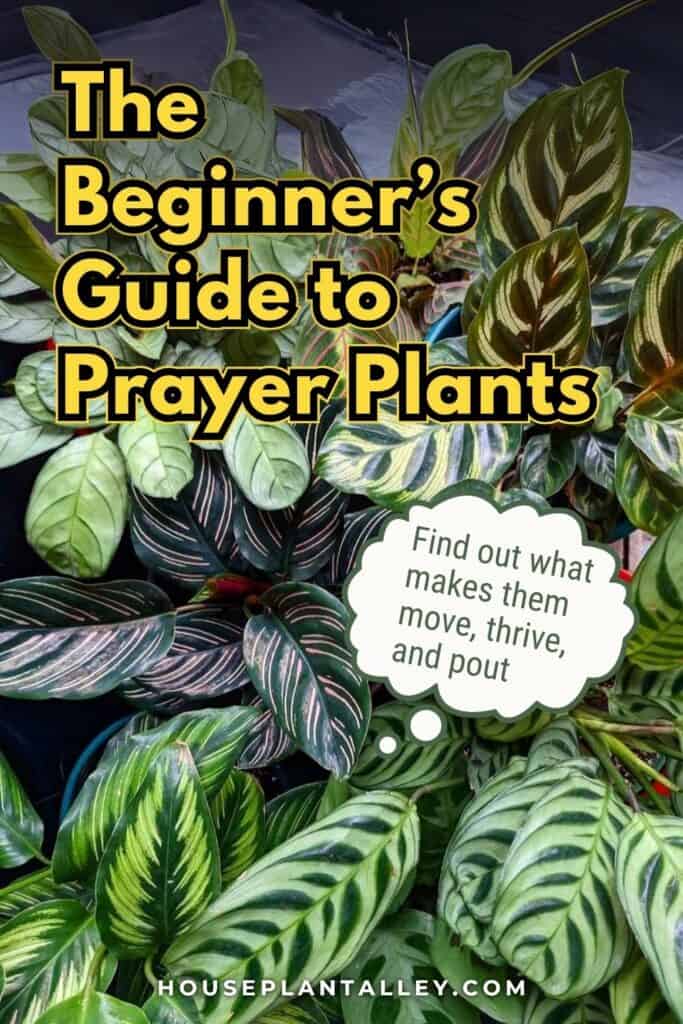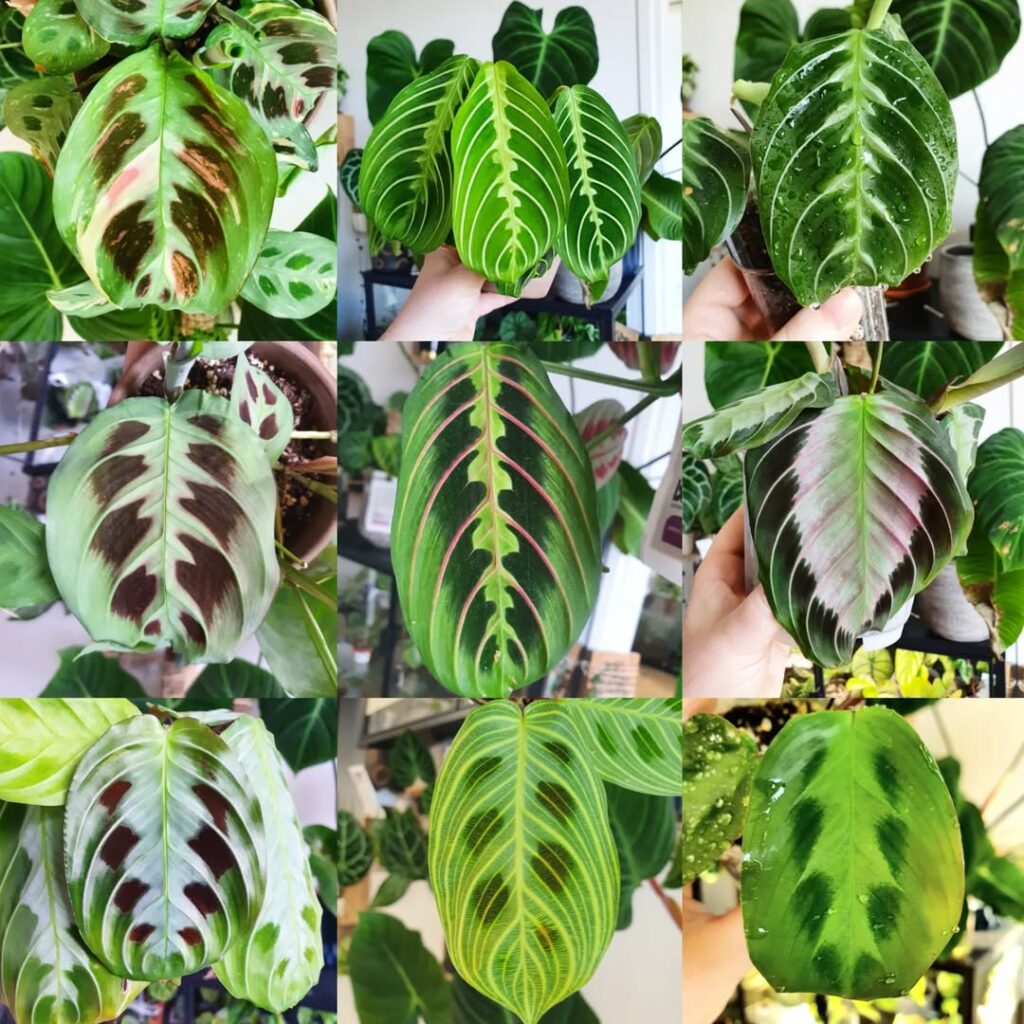If you’re considering a prayer plant, you’ll want to know what you’re getting into before bringing one home. These fascinating tropical plants, known scientifically as Maranta leuconeura, have earned their nickname from their unique habit of folding their leaves up at night like praying hands. While they’re stunning additions to any indoor garden with their vibrant patterns and movements, they do require specific care to thrive. Let’s explore what it takes to keep these beautiful plants healthy.

Contents
Understanding Prayer Plant Varieties and Characteristics
Prayer plants, scientifically known as Marantaceae, encompass several striking varieties that’ll catch your eye with their distinctive leaf movements and patterns. You’ll commonly find the Calathea, Maranta, and Stromanthe varieties in garden centers, each displaying unique color combinations and markings.
The most popular variety, Maranta leuconeura, features oval leaves with distinctive veining in red, green, and cream. You’ll notice these plants’ signature trait: their leaves fold upward at night, resembling hands in prayer. The Calathea ornata showcases pink pinstripes, while the Stromanthe triostar flaunts dramatic variegation with pink and cream streaks.

Light and Temperature Requirements
While these tropical beauties thrive in bright, indirect light, you’ll want to keep them away from harsh direct sunlight that can scorch their delicate leaves. Place your prayer plant 3-6 feet from east or north-facing windows for ideal exposure, or use sheer curtains to filter intense light.
Your prayer plant will be happiest in temperatures between 65-80°F (18-27°C), making them perfect for most indoor environments. Be sure to keep them away from cold drafts near windows or air conditioning vents. For best results, maintain humidity levels above 50% and avoid letting temperatures drop below 60°F (15°C), especially during winter months.
Watering and Humidity Needs
Three key factors determine proper watering for your prayer plant: soil moisture, drainage, and timing. You’ll want to keep the soil consistently moist but never waterlogged, checking the top inch with your finger before watering. When it feels slightly dry, it’s time to water thoroughly.
Prayer plants thrive in humidity levels above 50%, making them perfect bathroom companions. You can boost humidity by misting daily, using a pebble tray filled with water, or running a humidifier nearby. If you notice brown leaf edges, that’s usually a sign your plant needs more moisture in the air.
Always water at the soil level, avoiding leaves to prevent fungal issues.
Soil Mix and Fertilization Guide
Beyond proper watering, your plant’s growing medium provides the foundation for success. You’ll need a well-draining mix that combines two parts peat moss, one part perlite, and one part standard potting soil to create the perfect environment for your prayer plant’s roots.
When it comes to fertilization, feed your plant monthly during the growing season (spring through fall) with a balanced, water-soluble fertilizer diluted to half strength. If you’re using a 10-10-10 formula, mix 1/2 teaspoon per gallon of water. During winter months, reduce feeding to once every 6-8 weeks as growth naturally slows.
Common Problems and Troubleshooting
Your prayer plant’s leaves can develop brown spots and crispy edges when exposed to low humidity, hard water, or direct sunlight. If you notice drooping or curling leaves, you’re likely dealing with either underwatering, overwatering, or temperature stress from cold drafts. These common issues, while concerning, can usually be corrected by adjusting your plant’s care routine and environment to better match its tropical preferences.
Leaf Browning and Spots
When prayer plants develop brown spots or leaf edges, they’re typically signaling some form of environmental stress or improper care. The most common culprits are low humidity, excessive direct sunlight, or mineral buildup from tap water.
You’ll want to maintain humidity above 50% by misting daily or using a pebble tray. If you notice crispy edges, move your plant away from air vents and heating sources. For those pesky brown spots, check the undersides of leaves for spider mites, which leave tiny specks and webbing.
Switch to filtered water or let tap water sit for 24 hours before using to prevent mineral-related leaf damage.
Drooping or Curled Leaves
Prayer plants display two telltale signs of distress through their leaves: drooping stems and curled edges. These symptoms usually indicate that your plant’s care routine needs adjusting, particularly regarding moisture and light exposure.
If you’re noticing drooping leaves, check the soil moisture level immediately. Your plant’s likely too dry or oversaturated. Insert your finger 1-2 inches into the soil – if it’s bone dry or soggy, you’ve found your problem.
Curled leaves often signal too much direct sunlight or low humidity. Move your plant 3-4 feet away from windows and maintain humidity above 50% using a pebble tray or humidifier.
Propagation and Growth Tips
You’ll find two effective ways to multiply your prayer plant: stem cuttings and division. For stem cuttings, snip a healthy 4-6 inch section just below a node, remove the bottom leaves, and place it in water or moist soil until roots develop in 2-3 weeks. If you’ve got a mature, crowded plant, you can gently separate it into smaller sections during repotting, ensuring each division has healthy roots and at least two leaves.
Stem Cutting Success Tips
Taking stem cuttings from your prayer plant isn’t rocket science, but there’s definitely a right way to do it. Choose healthy stems with at least two nodes, and make your cuts just below a node using clean, sharp scissors.
Place your cuttings in water-filled jars, ensuring the nodes are submerged while keeping leaves above water. Change the water every 3-4 days to prevent bacterial growth.
Once roots reach 2-3 inches long, typically after 2-3 weeks, transfer your cuttings to small pots with well-draining potting mix. Keep the soil consistently moist, and you’ll see new growth within a month.
Division for New Plants
While stem cuttings work well for smaller plants, division offers a faster way to multiply mature prayer plants into multiple thriving specimens. During spring or early summer, gently remove your plant from its pot and shake off excess soil to expose the root system.
Look for natural separation points where stems emerge from the root mass. Using clean, sharp scissors, cut through the roots to create sections, ensuring each division has at least 2-3 healthy stems and plenty of roots.
Immediately pot each division in fresh, well-draining soil, water thoroughly, and place in bright indirect light. You’ll notice new growth within 2-3 weeks with proper care.
